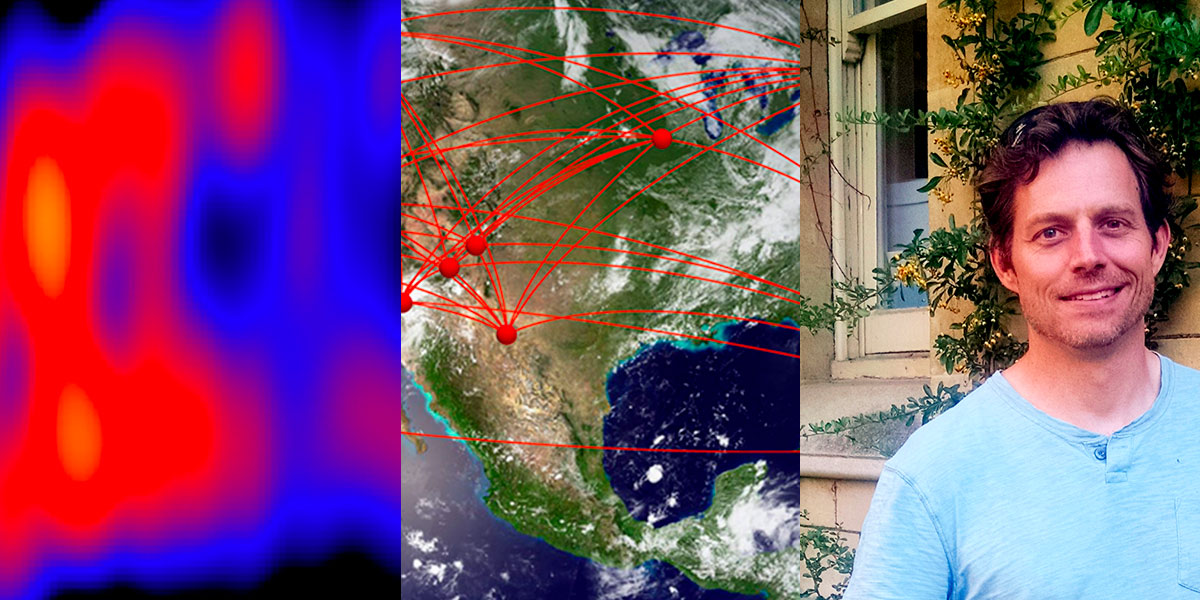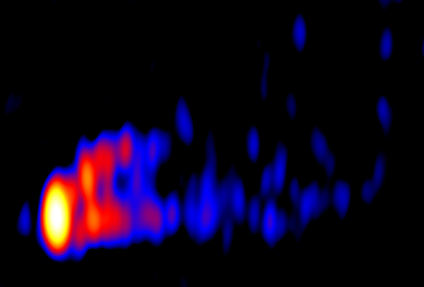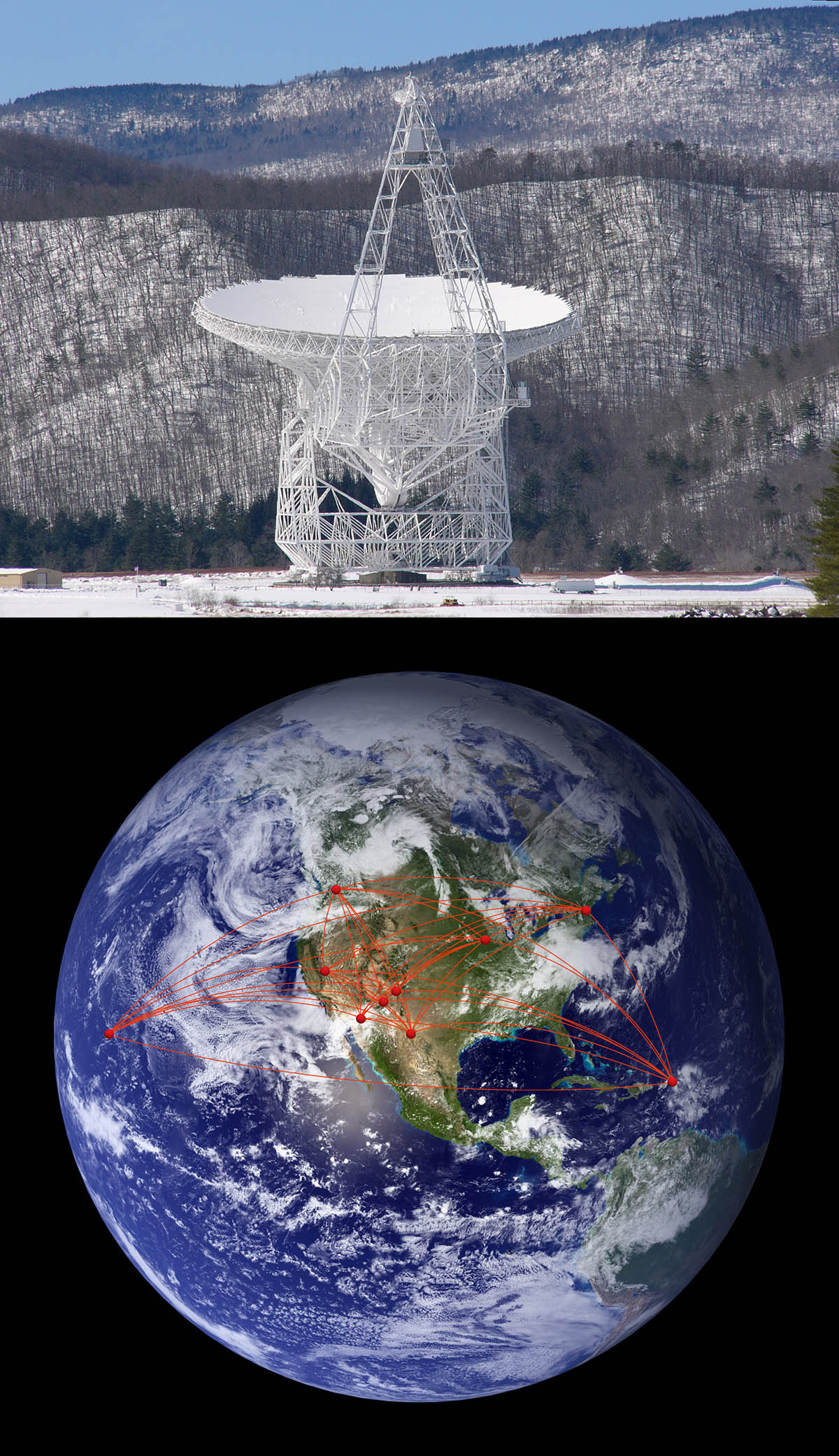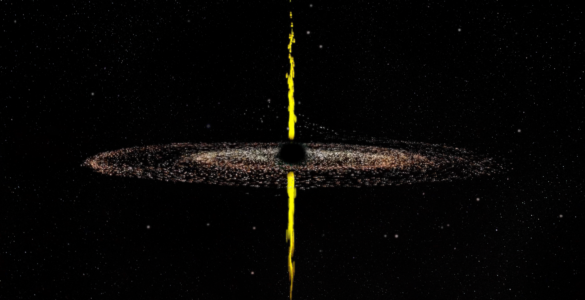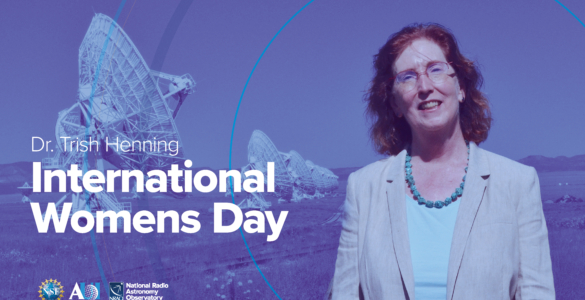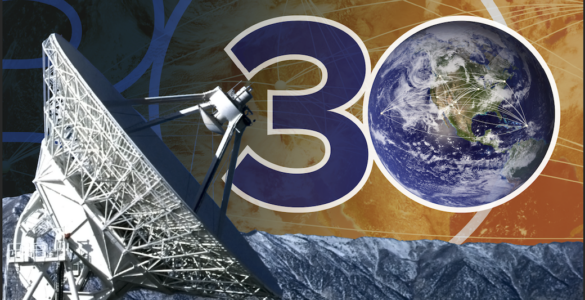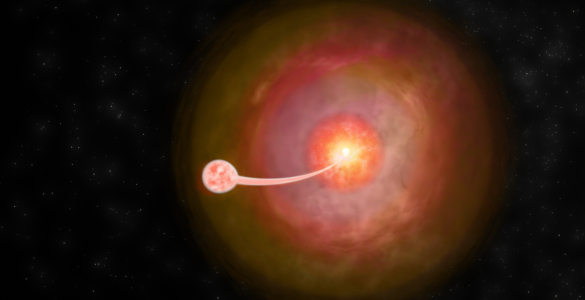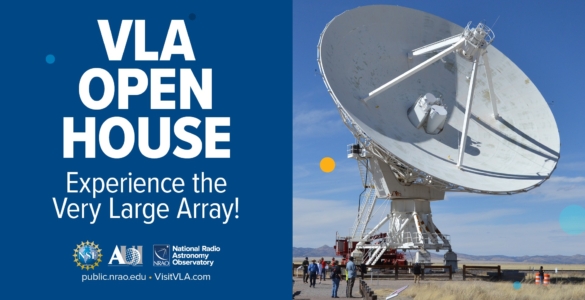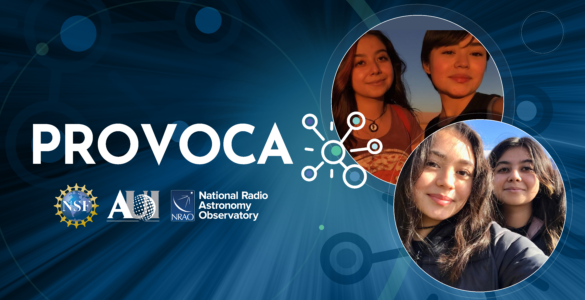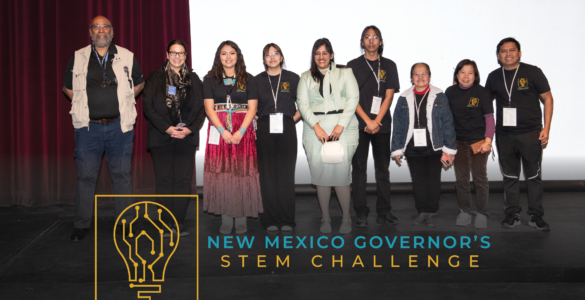Topics in This Issue:
Astronomers linked NRAO's Very Long Baseline Array and Green Bank Telescope for their first combined observations at millimeter wavelengths, providing an unprecedented view of the environment around a supermassive black hole and the conditions that help shape its powerful jets.
Megamasers – naturally amplified cosmic radio sources – can be precisely tracked as they orbit supermassive black holes in the centers of distant galaxies. Under the right conditions, astronomers can use these objects to calculate distances to their host galaxies using simple geometry. One recent observation provides an independent measurement of the Hubble Constant, the value that describes how fast the Universe is expanding. These types of observations may ultimately improve our understanding of dark energy.
NRAO astronomer Scott Ransom has been elected a Fellow of the APS for his contributions to the understanding of pulsars.
1. GBT and VLBA Join Forces to Study Jet from a Black Hole
NRAO’s Green Bank Telescope (GBT) and Very Long Baseline Array (VLBA) joined forces in a combined millimeter-wavelength (86 GHz) observation of a relativistic jet emanating from the supermassive black hole at the center of galaxy M87. By combining these two instruments, astronomers were able to achieve both high sensitivity (thanks to the large collecting area of the GBT) and high resolution (thanks to the wide geographical distribution of the VLBA antennas). The resulting image achieved a dynamic range – the difference between the brightest and faintest areas – of 1,500 to 1, which is the highest ever achieved for this jet at this wavelength. The new image confirms some important jet features that were seen at longer wavelengths, including a wide opening angle at the base and a counter jet traveling in the opposite direction. As material from a massive accretion disk falls in on a supermassive black hole, some of it gets accelerated and blasted into intergalactic space at nearly the speed of light in a pair of jets that shine brightly at radio wavelengths. Understanding how these jets are powered and how they attain their highly confined shape is an area of intense research. “To address these questions definitively, it has long been desired to achieve a high-quality observation that can resolve and image the base of a jet as close to a black hole and accretion disk as possible. These new observations with the GBT and VLBA have allowed us to do just that, shedding light on the complicated jet-formation process,” noted Kazuhiro Hada, an astronomer with the Mizusawa VLBI Observatory in Japan. The researchers were able to see details on a scale just 10 times that of the black hole’s event horizon – the area around a black hole where gravity is so strong that not even light can escape. They determined that near the black hole the jet is very broad – spanning approximately 100 degrees, which is the broadest opening angle ever seen in any astrophysical jet. Hada and his team also discovered a highly polarized feature near the base of the jet, which they attribute to a well-ordered magnetic field that must exist quite near the black hole. “These results show that the GBT is a powerful addition to our astronomical capabilities for high resolution measurements at millimeter wavelengths,” concluded Jay Lockman, an astronomer at the NRAO in Green Bank.
Reference: “High-Sensitivity 86 GHz (3.5 mm) VLBI Observations of M87: Deep Imaging of the Jet Base at a Resolution of 10 Schwarzschild Radii,” Hada et al.; the Astrophysical Journal; February 2016. http://arxiv.org/abs/1512.03783
2. Swirling Masers Measure Cosmic Distances and Expansion of the Universe
As part of the Megamaser Cosmology Project, an ongoing campaign to measure cosmic distances by studying the motion of masers in distant galaxies, astronomers used the National Science Foundation’s (NSF) Green Bank Telescope (GBT) to study the galaxy NGC 5765b and derive a new, accurate determination of its distance. Megamasers are clouds of gas that orbit supermassive black holes in the centers of distant galaxies. They emit highly amplified radio waves of a particular frequency, which is the same principle behind the emission of laser light. The astronomers compiled two years’ worth of Doppler data from the GBT, revealing the motion of the masers, and combined it with a high-precision image of the maser disk. With these data, the astronomers were able to apply basic geometry to calculate the distance to the galaxy with unprecedented precision: approximately 412 million light-years from Earth (plus or minus 38 million light-years). “This is the best measurement so far for the Megamaser Cosmology Project and the most important galaxy we’ve studied,” said Jim Braatz, an astronomer with the National Radio Astronomy Observatory in Charlottesville, Va. This measurement shows that the Universe is expanding at a rate of about 66 kilometers per second per megaparsec (plus or minus 6 km/s per Mpc). This measurement is in line with satellite observations of the cosmic microwave background, which can be interpreted using Einstein’s cosmological constant to predict a rate of about 68 km/s per Mpc. Direct measurements from “standard candles” – cosmic objects with a well-established brightness like Cepheid variable stars or type 1a supernovas – put a much higher value on the rate of expansion (approximately 73 km/s per Mpc). Further studies will help resolve the tension between these two values. “Our new measurement is valuable because it uses a one-step, geometric method, so it’s not subject to ‘distance ladders’ and standard-candle calibrations,” concluded Braatz. Feng Gao, a student at the Shanghai Astronomical Observatory working with Braatz, is the lead author on this study.
Reference: “The Megamaser Cosmology Project. VIII. A Geometric Distance to NGC 5765b,” Gao et al.; the Astrophysical Journal; February 2016. http://arxiv.org/abs/1511.08311
3. NRAO Astronomer Elected Fellow of American Physical Society
National Radio Astronomy Observatory astronomer Scott Ransom has been elected a Fellow of the American Physical Society (APS) in recognition for his contributions to the understanding of pulsars. Ransom’s research focuses on exotic binary and millisecond pulsars. He specializes in detecting new ones in large-scale radio surveys as well as using the known ones to do basic physics experiments, such as testing Einstein’s theory of general relativity, to probe the unknown physics of beyond-nuclear density matter, or to directly detect gravitational waves from supermassive black hole binaries. The APS limits the number of fellows to no more than one-half of one percent of its more than 50,000 members. According to the APS, fellowship is a distinct honor signifying recognition by one’s professional peers. Fellows are elected based on their contributions to the physics enterprise, through research, application of physics, leadership and service, or contributions to physics education. Ransom’s citation, which will appear on his Fellowship Certificate, reads: “For contributions to the study of radio pulsars, including the measurement of pulsar masses that have constrained the equation of state of ultradense matter, the discovery of many millisecond and binary pulsars, and the development of key pulsar algorithms.”
Ransom earned his Ph.D. in 2001 from Harvard University in Cambridge, Mass., as a Hertz Fellow and was the 2010 winner of the American Astronomical Society’s Helen B. Warner Prize.
The National Radio Astronomy Observatory is a facility of the National Science Foundation, operated under cooperative agreement by Associated Universities, Inc.
# # #
Contact:
Charles Blue, Public Information Officer
(434) 296-0314; cblue@nrao.edu



